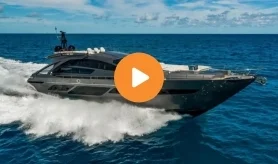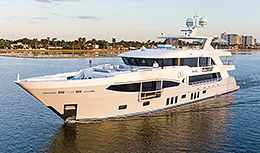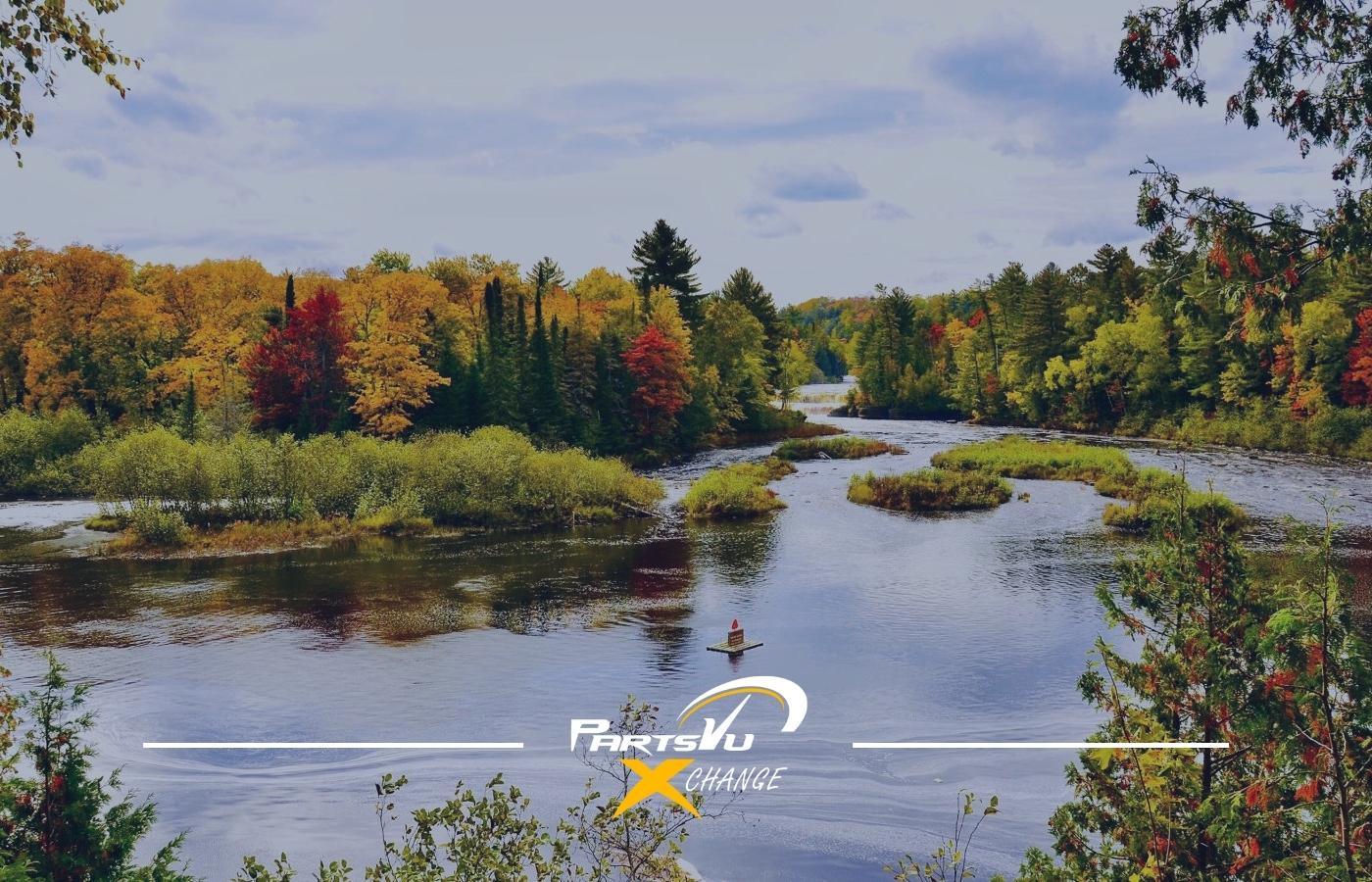There’s no better time for fishing in the Upper Midwest than the end of September through the middle of December. Fall fishing is simply the best.
Our PartsVu Xchange Talks Boating host sat down with Garrett Paquette, a professional angler competing within the Bassmaster Elite Series, and Andy Smolen, a member of a 3-man team active in the Michigan Walleye Tour tournament series. Today’s conversation primarily focuses on bass, walleye, and other species common to the Midwest and upper Midwest.
How do fish in the Great Lakes region respond to the fall temperature changes?
Garett Paquette: The fish are almost like humans in a way. We want to stay inside and don’t want to have to do a lot in the cold. When we feel winter coming, it’s time to stock up.

Fish are thinking the same thing. They know there’s about to be ice over the top of them, and it’s going to be really cold on their bodies. They’re cold-blooded, so for them, it’s all about feeding. They want to put on as much weight as possible before the winter.
So, it’s a fantastic time because you’re usually dealing with ultra-aggressive fish.
With poor temperatures and weather conditions, you usually have the lakes to yourself. It’s exhilarating to get out there and fish if you’re willing to put up with some harsh conditions at times.
Andy Smolen: While I have focused on walleye tournament fishing in recent years, I fish both walleye and smallmouth. I live in Au Gres, right on Saginaw Bay and the fishing here is phenomenal. In the fall, both of those fish want to eat, so you can find spots with many fish.
The weather is usually cold and nasty. Some days it’s quite rough, but other days, you might have a flat calm day. There’s usually nobody out there—everybody’s worried about deer hunting, so you often have the lake to yourself.
Are there any other fall behavior changes that come to mind?
Garrett: The fall is when the fish will use small pieces of cover or get into huge groups in pretty small areas. So, once you find the fish, you don’t even have to move the boat a lot of times. You can sit there and make the same cast for hours at a time and keep catching them.
It can be tricky because when the fish do group up like that, that means they’re leaving other spots. In the summertime, the fish are spread out, and you can catch fish throughout a body of water, whereas in the fall, it becomes a little more specific.
There’s a lot more what we call “dead water,” where there’s no fish. But once you find where those fish are hanging out, it’s game on; it’s going to be the most fast-action fishing of the year by far.
Andy: And you can usually catch fish on multiple different style baits, too, because they’re hungry. You can have a deck full of ranging baits on various rods and catch them with numerous techniques.

Where are baitfish typically found in the fall?
Garrett: Not every lake is going to have the same types of baitfish. In the upper Midwest, the primary forage is perch or bluegill. Those fish don’t make a significant migration like baitfish in the south might. They like to find deeper weed edges or any structure for concealment.
In the fall, the lake vegetation gets fairly decimated as the temperatures drop. Typically, our baitfish will hang out in the last bit of living vegetation they can find. Usually, vegetation continues to grow in the deepest water as those deeper waters will be the least affected by the cold.
Those bluegill and perch will move to deeper weed lines, maybe a few patches of “perch grass,” which is aquatic vegetation that grows only a couple of inches.
In other lakes, the primary forage might be crawfish or gobies. These baits love rock piles, so I’ll look for big clusters of rock and structures like that.
A key is figuring out where the baitfish have likely moved because your target species will follow the baitfish. Depending on the lake, late fall baitfish depths might be 10 feet, or based on the lake’s condition, they may be in depths up to 30-40 feet.
It’s essential to know which types of baitfish are in the body of water you are fishing. You can learn a lot through simple online research.
Could you describe some of the fall fishing strategies you use?
Garette: In the fall, the bait change is for the better because in the summertime, sometimes the fish are sluggish with the hot weather, and you have to fish slow and drag your baits. In these warmer temperatures, you have to be patient and in tune with what’s going on to get bites. As we’ve talked about, the fish are more aggressive in the fall.
I’ll try to cover a lot of water to find the fish because they will be clustered rather than spread out across the lake. So, I use a fast-moving bait, like a jerkbait, crankbait, or even a topwater bait. Once you find the fish with these faster-moving strategies, then you slow down.
Something really popular up here is a tube jig. It mimics a crayfish, goby, or perch well for smallmouth. Many different baits work when you are dragging the bottom, but I first fish fast to find them.
Andy: Typically, when it’s at the peak of summer or the tail end of summer, everybody’s dragging the bottom, pulling crawler harnesses, and sometimes you have to fish quite slowly. As Garrett said, you can usually pick up the pace in the fall. It’s a great time to get back to trolling with stick baits and body baits and cover a lot more water.
When fall comes around, we can start trolling all different size baits because many of the fish have had all season to grow. You can start using some of the bigger lures, like SPRO Madeye 120 size baits, Rapala Husky Jerks, or Bandits, and get some bigger fish to bite.

What is the fall fishing tournament scene like?
Garrett: Usually, we’re done by late August or the first week of September.
It was actually kind of neat from a timing perspective last year with COVID. I am certainly not saying that COVID was neat, but we didn’t start our season until June due to the pandemic. The season ran from June to November, which was a cool little twist for everybody.
As anglers, we kind of get in a rut up fishing from January to August on tour. So, we got to see these lakes in a whole new light. It was a refreshing take on tournament fishing. It felt like we were fishing all-new bodies of water.
Andy: There are a few fall tournaments up here. They call them the “Fall Brawl.” Some of the walleye will start moving towards the rivers, so it opens up different areas. They do one on Lake St. Clair. They also do one here in Saginaw Bay, but our tournament season typically ends at the beginning of September.
Some guys will still fish in the big lake, and some will stay fishing in the river—it all depends on the weather.
What advice do you have for anglers trying to improve their success fishing in the fall?

Garrett: Baitfish and fish location are everything. You need to figure out where the fish are, determine what they’re eating, and match your lures and colors accordingly.
The next step is staying on the move. Fall is not a time of year where the fish are everywhere. They’re going to be in small little groups, but the fishing is really good once you find them. So I just stay on the move if I’m not getting bites or seeing any signs of life in that area.
I also advise people to pay attention to everything because there are a lot of giveaways this time of year. If you see fish-eating birds in an area, like herons or loons, you’re likely around fish.
Also, pay attention to the wind. The wind will blow around plankton, which baitfish love to feed on. So, look for areas that might have the wind blowing into them.
Andy: I advise people just to get out there, watch the weather, and dress appropriately. Getting out there is the name of the game, and I also drive around and look for isolated rock piles.
Try to find any remaining weeds that might be out there, use your side scan, and drive around so that you can cover a lot of water.
If I’m walleye fishing and we’re trolling, we can run six lines with two guys in the boat, which allows us to cover a lot of water.
Where are your favorite places for fall fishing?
Andy: I like the Northern Michigan waters with the smallmouth bass and the walleye. I love Saginaw Bay but enjoy being anywhere on the lake.
Garrett: I totally agree with Andy. In the fall, I love Northern Michigan. The fishing is excellent, and the scenery is beautiful when the leaves start to change—it’s really picturesque.











